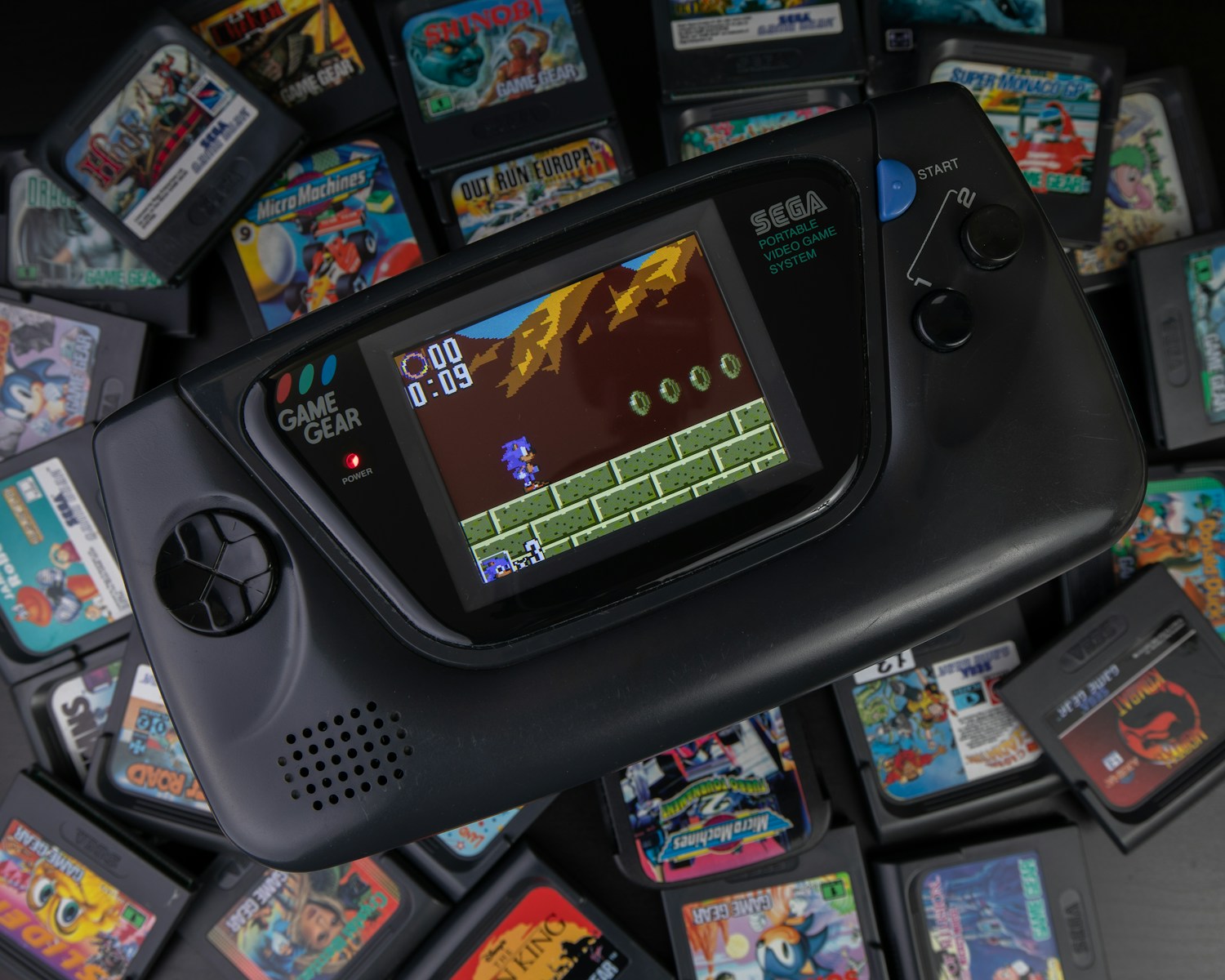In the pantheon of gaming giants, Sega stands as a colossus, having shaped not only Japan’s video game landscape but also leaving an indelible mark on global pop culture. From the buzzing arcades of Tokyo to the living rooms of gamers worldwide, Sega’s journey through the years encapsulates the highs and lows of an industry in constant flux. This article delves into Sega’s storied history, exploring how this innovative company has evolved, clashed with rivals, suffered setbacks, and ultimately, how it continues to influence the gaming world and beyond.
Sega’s Dawn: Pioneering Japan’s Gaming Scene
Sega’s inception in the 1960s marked the beginning of a new era in Japan’s entertainment sector. Initially focused on providing amusement through slot machines, the company soon pivoted to video games, sensing a burgeoning market. Sega’s early ventures into arcade gaming not only popularized the medium in Japan but also demonstrated the potential for video games as a mainstream form of entertainment. The release of titles like "Periscope" in the late 1960s offered gamers unprecedented interactive experiences, laying the groundwork for the arcade culture that would dominate Japanese youth entertainment for decades. Sega’s commitment to innovation was evident in its hardware and game design, constantly pushing the boundaries of what was possible. This pioneering spirit captured the imagination of a generation, establishing Sega as a household name in gaming circles. Through strategic partnerships and relentless pursuit of technological advancement, Sega positioned itself at the forefront of the gaming industry, a status it would strive to maintain throughout its history.
From Arcades to Homes: Sega’s Console Revolution
The transition from arcades to home entertainment systems marked a significant chapter in Sega’s history. Recognizing the potential for growth, Sega launched its first console, the SG-1000, in 1983. While initial reception was lukewarm, the subsequent release of the Sega Master System and, more importantly, the Sega Genesis (Mega Drive outside North America), revolutionized the home gaming industry. The Sega Genesis, with its advanced graphics and sound capabilities, coupled with an aggressive marketing strategy, firmly established Sega as a leading player in the console market. This era saw the birth of iconic franchises that would become synonymous with Sega’s brand. By cleverly leveraging its arcade successes, Sega provided gamers with an arcade-like experience in the comfort of their homes, setting a new standard for home entertainment.
Sonic the Hedgehog: An Icon is Born
The introduction of Sonic the Hedgehog in 1991 catapulted Sega into unprecedented popularity. Designed as Sega’s mascot to rival Nintendo’s Mario, Sonic’s fast-paced gameplay and vibrant personality resonated with a wide audience. The blue blur’s debut game was not only a commercial success but also a cultural phenomenon, significantly contributing to the Sega Genesis’s domination in the console market during the early 90s. Sonic’s appeal lay in his rebellious character and the game’s innovative use of speed, which set it apart from other platformers of the time. The franchise has since expanded into various media, including cartoons, movies, and merchandise, cementing Sonic’s status as an enduring icon in gaming culture.
Sega vs. Nintendo: The Console Wars Begin
The rivalry between Sega and Nintendo during the late 80s and early 90s is the stuff of legend. Dubbed the "console wars," this period was marked by intense competition as both companies vied for market dominance. Sega’s aggressive marketing tactics, epitomized by the slogan "Genesis does what Nintendon’t," highlighted the differences between the two platforms, appealing to a demographic that craved more mature content and sophisticated graphics. This rivalry not only fueled innovation but also expanded the video game market, drawing in millions of new gamers. Despite the fierce competition, the console wars ultimately benefited the industry, pushing both companies to new heights of creativity and technological innovation.
The Dreamcast: Ahead of Its Time
In 1998, Sega released the Dreamcast, a console that many regard as ahead of its time. The Dreamcast was the first home console to include a built-in modem for internet support and online play, a feature that would become standard in future gaming systems. With its advanced graphics, a strong lineup of launch titles, and innovative features like the VMU (Visual Memory Unit), the Dreamcast garnered critical acclaim and a dedicated fan base. However, the arrival of Sony’s PlayStation 2, along with various internal and financial challenges, led to the Dreamcast’s untimely demise. Despite its short lifespan, the Dreamcast is celebrated for its groundbreaking contributions to the gaming industry and remains a beloved piece of Sega’s legacy.
Game Over for Sega Consoles: A Strategic Shift
The commercial failure of the Dreamcast forced Sega to reassess its position in the console market. In 2001, Sega made the monumental decision to cease production of its hardware and rebrand itself as a third-party software developer. This strategic shift allowed Sega to focus on its strengths—game development—while also expanding its reach by publishing games for other platforms. The transition was not without its challenges, but Sega managed to sustain its relevance in the industry by leveraging its rich catalog of intellectual properties. Franchises like Sonic the Hedgehog, Total War, and Yakuza continued to thrive, proving that Sega’s legacy would endure beyond the hardware that once defined it.
Sega’s Arcade Dominance: A Legacy of Innovation
Even as Sega’s presence in the home console market waned, its influence in arcades remained strong. Sega’s arcades in Japan and around the world continued to be popular destinations for gaming enthusiasts, thanks in part to the company’s relentless innovation in arcade technology. Titles like "Virtua Fighter" and "Daytona USA" revolutionized the arcade experience, offering players graphics and gameplay that were unparalleled at the time. Sega’s willingness to experiment with new forms of entertainment, such as VR and motion-sensing technology, kept its arcade offerings fresh and exciting. This commitment to innovation ensured that Sega’s arcade division would remain a vibrant part of its business, even as the company evolved.
Sonic’s Evolution: Keeping Up with Generations
Over the years, Sonic the Hedgehog has undergone numerous transformations, adapting to changing technologies and gamer expectations. From his 2D side-scrolling origins to 3D adventures, Sonic has explored various genres and gameplay styles. Sega has been careful to keep Sonic relevant, introducing new characters and stories while revisiting classic elements that fans love. Recent titles, such as "Sonic Mania," pay homage to Sonic’s roots, offering nostalgic gameplay with modern enhancements. Meanwhile, ventures into movies and mobile gaming have introduced Sonic to a new generation of fans, ensuring the character’s place in popular culture. Through all its iterations, Sonic remains a testament to Sega’s ability to evolve with the times while staying true to its heritage.
Sega’s Role in Japan’s Cultural Export
Sega’s impact extends beyond gaming, contributing significantly to the global appeal of Japanese culture. Iconic franchises like Sonic the Hedgehog and Yakuza have become integral parts of Japan’s cultural export, introducing international audiences to Japanese storytelling, art, and humor. Sega’s games often incorporate elements of Japanese history, mythology, and urban life, providing players around the world with a unique window into Japanese culture. Through collaborations, merchandise, and media adaptations, Sega has played a pivotal role in the worldwide fascination with Japan’s entertainment offerings, cementing its status as a cultural ambassador.
From Video Games to VR: Sega’s Ongoing Journey
Sega’s foray into virtual reality and other cutting-edge technologies signals the company’s ongoing commitment to innovation. By embracing VR, augmented reality (AR), and other immersive technologies, Sega aims to redefine the gaming experience, offering players new levels of engagement and interactivity. The company’s R&D efforts are focused on blending physical and digital entertainment, creating unique experiences that draw on Sega’s rich heritage while pushing the boundaries of what video games can be. As the industry continues to evolve, Sega’s willingness to explore new horizons ensures that it remains at the forefront of gaming innovation.
Sega’s Impact on Japan’s Music and Anime
Beyond video games, Sega’s influence can be seen in Japan’s music and anime industries. The company’s game soundtracks have contributed to the careers of numerous composers and musicians, with some themes becoming iconic pieces of video game music. Sega’s involvement in anime, through adaptations of its game franchises and original productions, has further broadened its cultural impact. These ventures not only enrich Sega’s storytelling capabilities but also reinforce the company’s role in shaping Japan’s pop culture landscape.
The Future of Sega: Embracing New Frontiers
Looking ahead, Sega’s future appears to be a blend of honoring its past while boldly stepping into uncharted territories. The company’s dedication to its core franchises, along with its ventures into new gaming technologies and platforms, suggests a strategy that balances tradition with innovation. Sega’s participation in cloud gaming, mobile platforms, and even potential return to the console market with nostalgic offerings indicates its intent to remain adaptable. As Sega embraces these new frontiers, its enduring legacy serves as both a foundation and a beacon for the future, promising that whatever comes next will be nothing short of revolutionary.
Sega’s journey from a fledgling amusement machine company to a titan of the gaming industry is a testament to its resilience, innovation, and ability to connect with generations of gamers. As it navigates the challenges and opportunities of a rapidly changing industry, Sega’s enduring legacy is a reminder of the profound impact a single company can have on Japan’s gaming culture and beyond. With its sights set on new technologies and experiences, Sega continues to shape the future of entertainment, proving that its story is far from over.








